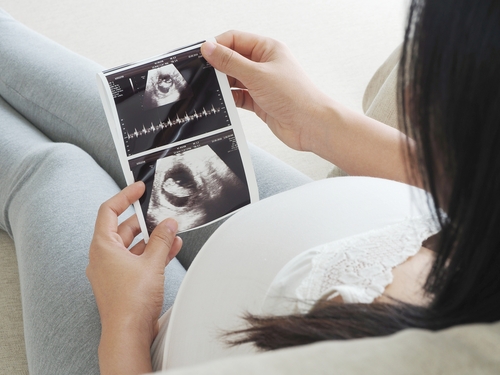HAE Attack in Fetus Reported, Baby Responded to Mom’s Treatment

The first documented case of a hereditary angioedema (HAE) attack in an unborn child — whose symptoms resolved after treating the mother with the recombinant human C1-inhibitor (rhC1-INH) therapy, Ruconest — has been reported.
The case report, “Hereditary Angioedema Attack in Utero and Treatment of the Mother and Fetus,” was published in Mayo Clinic Proceedings: Innovations, Quality & Outcomes.
HAE is most often caused by a mutation in the gene that codes for the protein C1 esterase inhibitor (C1-INH). The lack of functional C1-INH leads to the swelling attacks characteristic of the disease.
Growing evidence suggests that, during pregnancy, changes in hormone levels can influence the frequency and severity of HAE attacks. Some studies suggest that HAE attacks affecting the abdomen become more common when a person is pregnant; findings have indicated a higher risk of attacks in late stages of pregnancy when the fetus can also have HAE. But research is still quite preliminary.
The report details a woman who first started experiencing HAE symptoms at age 12, and was diagnosed with HAE in 2015 at age 21. That year, she experienced 19 recorded HAE attacks; the following year, she had 14 attacks. The patient received acute treatment for these attacks, and was not on long-term prophylaxis.
At 23, the woman became pregnant for the first time. Over the three trimesters of the pregnancy, she experienced a total of 30 HAE attacks.
“For the mother, the number of HAE attacks during pregnancy was higher than before pregnancy, which is consistent with data from other studies,” the investigators wrote. Both are doctors; one is with a university dermatology clinic in North Macedonia, the other is with Pharming, which markets Ruconest.
Late in her pregnancy, the 38th week, the woman experienced a HAE attack that started in the lower lip and spread across her face. She took Ruconest, and her symptoms started to improve after about 15 minutes.
About 10 minutes after treating this attack, however, the patient felt unusual discomfort in her abdomen — the sensation was described as distinct from abdominal HAE attacks, and she didn’t feel nauseated or bloated. Concerned for the health of the fetus, the woman contacted her healthcare providers, and she was advised to go to the hospital for examination.
At the hospital, ultrasound revealed that the fetus had substantial swelling of the lip (to roughly three times normal size) and the right thigh (exact measurements not recorded).
A physical exam given the mother revealed that she was already in the late stages of labor.
Roughly two hours after treating her HAE attack, the woman gave birth to a healthy male infant. The baby’s facial swelling completely resolved within two minutes of being born. The circumference of his right thigh was 25 mm larger than that of the left thigh, but this swelling resolved within half an hour of his birth.
About 10 minutes after giving birth, the mother’s facial attack had almost completely resolved, and she did not experience subsequent attacks over the next several days.
Genetic testing later confirmed that the infant has HAE.
“This is the first documented case of an HAE attack in a fetus,” the researchers wrote. “Treatment of the mother with rhC1-INH was effective for both maternal and fetal attacks, which occurred almost simultaneously, with resolution within approximately 2 to 2.5 hours for both patients.”
The fact that treatment affected not just the mother, but also her unborn child, is of note because biological processes regulate what substances from a pregnant person’s bloodstream can cross into the fetus’ blood supply.
It is unknown whether rhC1-INH, used for treatment in this case, can cross these barriers. It is possible this is exactly what happened in this case.
But, since the woman was likely in labor when she treated her attack, it is also possible that “rhC1-INH may have entered the fetal circulation with the rupture of the amniotic sac and disruption of the placenta,” the researchers suggested.
Further studies will be needed to clarify this, but “the present findings suggest that active transport across the placental barrier should not be ruled out,” the team wrote.
Importantly, the woman’s case shows it is possible for a fetus to have an HAE attack.
“Ultrasonographers and neonatologists should consider the possibility of HAE in utero and immediately after birth when considering possible causes of fetal or neonatal edema,” the investigators concluded. “These data reinforce that it is imperative that newborns be tested as soon as possible if fetal edema via ultrasound is observed, particularly in those with a family history of HAE.”





